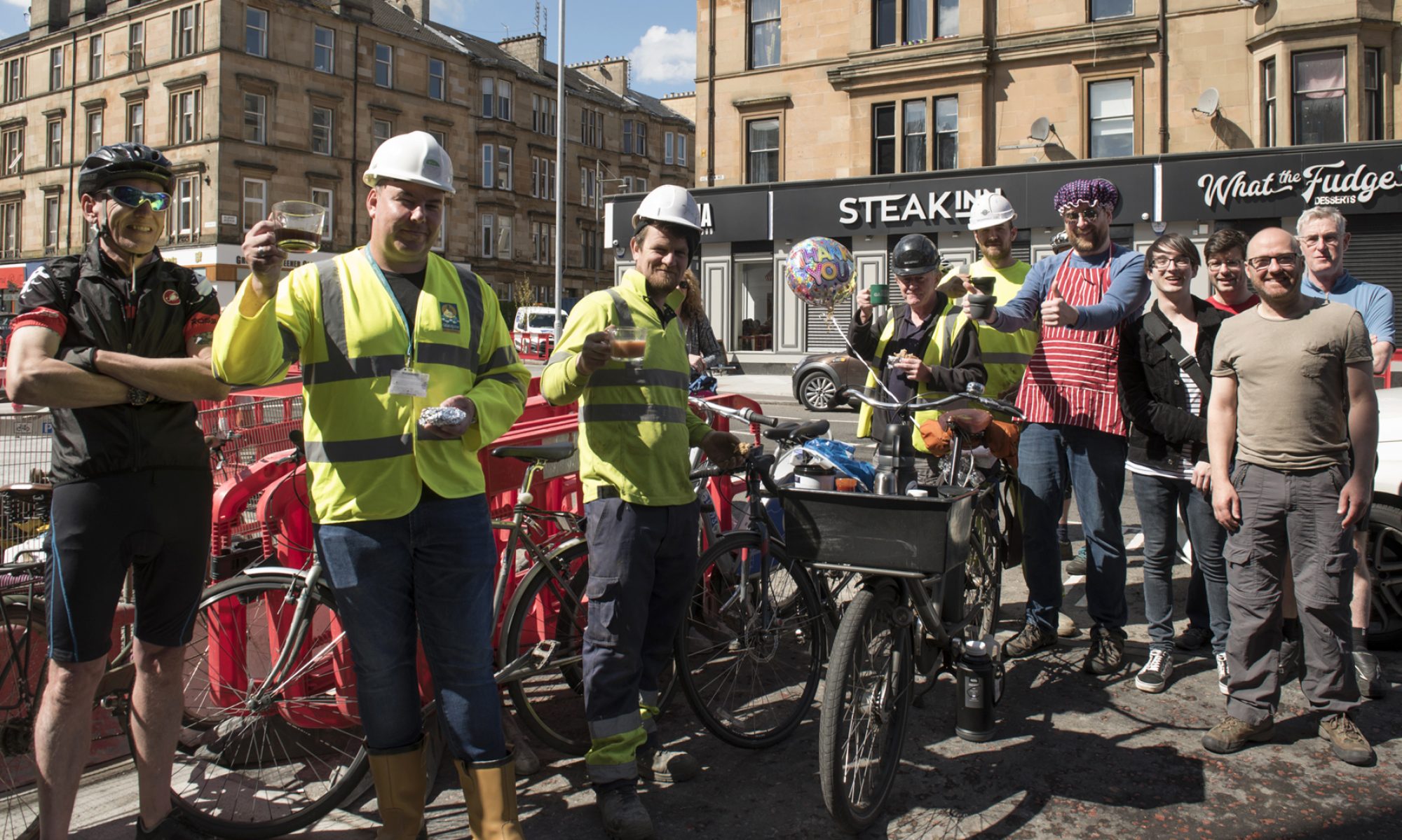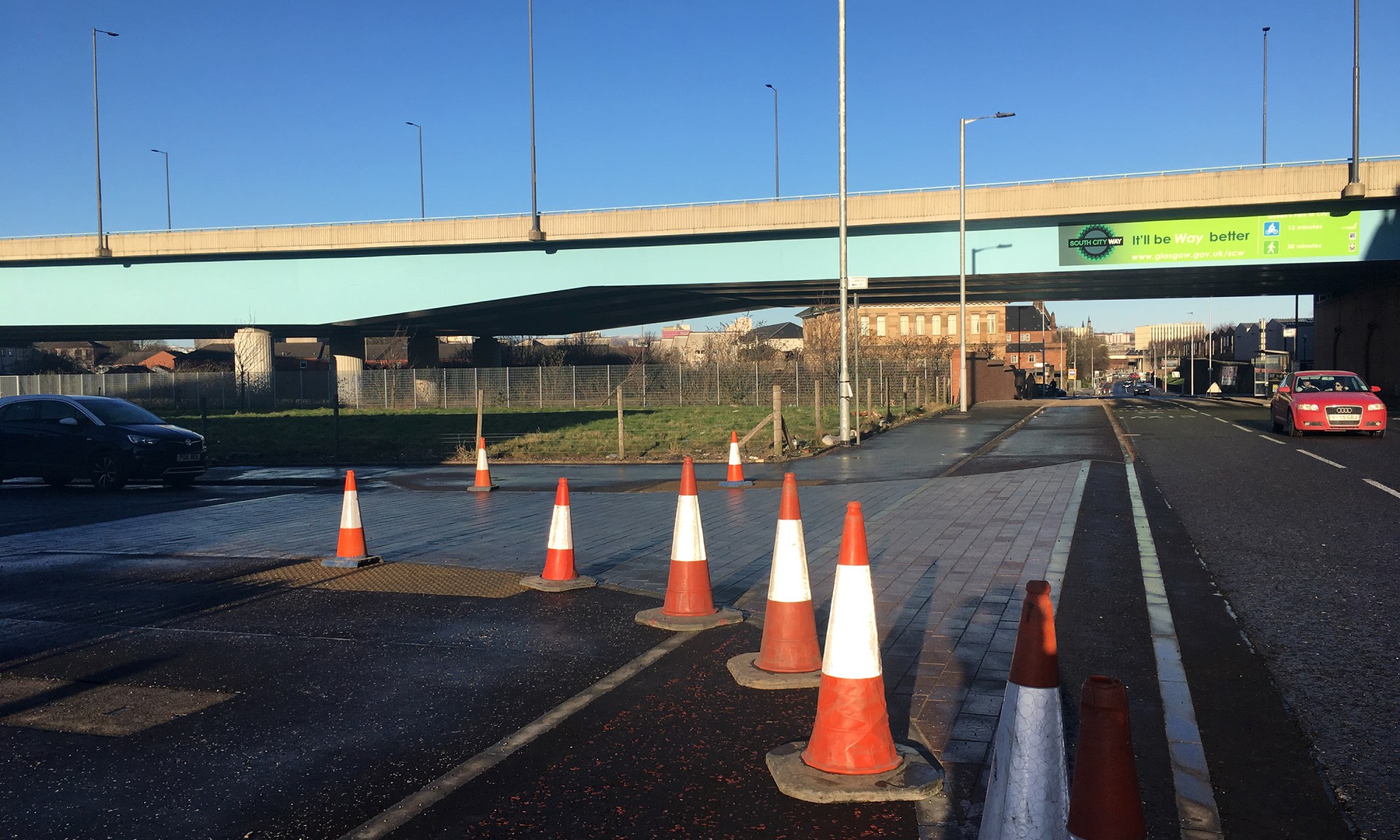We’ve had a lot of disquiet from our members this week about a side street that has been unveiled on the South City Way. While we do know and understand that our council is making great steps forward with schemes such as the SCW, and that UK design guidance on side street treatments has a long way to come, the safety of people cycling is at the heart of what we campaign for. We are so aware that side streets are a common source of collisions and so for the sake of safety, we want to work to get this right.
We’ve been in touch with GCC and Sustrans as follows, and will keep you updated on any progress.
Hi to our contacts in LES, Sustrans, and Cllr Richardson,
First of all thank you for the work you are doing to create safe places to cycle in Glasgow. We can see how hard everyone is working on getting this right, however we at GoBike wanted to get in touch to express our concerns about the designs on side streets that we are seeing emerging on the ground, particularly in reference to the most recently completed junction on the SCW at Turriff Street, but also in the wider context of other schemes in the planning stages.
Where segregated cycling lanes are installed, it is essential that the design of the side streets that meet them is well thought out, to protect the safety of the people using them. In practice, we believe that this means making the cycle lanes continuous where the road is continuous, and making the priority of the people using the cycle lanes across these side streets absolutely clear and unambiguous. Where this doesn’t happen, the safety of people on bikes is deeply at risk.
We would suggest that the following points are key to side street design considerations around cycle lanes:
Clear and unambiguous continuous priority for the cycle lane. If the cycle lane follows the road, the same priority afforded to vehicles on that road should also be given to people on bikes if the Transport Scotland active travel hierarchy is to be followed. If priority for the cycle lane is not made clear to people in vehicles, those turning will be far more likely to cross the lane before checking it’s clear, and before making their maneuver.
Surface material and colour. To be unambiguous, this must remain consistent and unbroken across the full length of the cycle lane. Consistently brightly coloured. Consistent safe and non-slippy surfacing.
Raised tables. Crossings for the cycle lane must be raised to footway height to slow vehicles speed and to reduce ambiguity over which users have priority.
Sharp corners. There should be no indentations or wide radius at corners that might encourage people in cars to take a sweeping line. Tight corners will encourage slower cornering.
We would be really keen to have the continuous priority of cycle lanes and the design of side streets on upcoming projects checked and re-assessed against these points. We are seeing potential side street issues within future plans for Connecting Woodside, and have concerns that the side streets will also remain ambiguous on Byres Road. We also understand that side streets are an issue within other projects outwith Glasgow and would be keen to add our campaign backing for the points outlined above. This is a safety issue – if side streets are not designed safely, we cannot proclaim our new cycling infrastructure to be safe.
We look forward to hearing from you all on how this issue can be improved – if there is anyway that we can assist, please do let us know.
Thanks and best wishes
References:
UK design guides have yet to detail side street treatment well but we understand that the CROW manual provides good examples.
This article is extremely helpful: https://robertweetman.wordpress.com/2018/11/13/design-details-1/
‘Designing for Cycle Traffic: International principles and practice’ John Parkin (pgs 105-108) lends support to the need for continuous cycle tracks in order for them to retain value, and details good design practice.
This study provides reference to highway code rules of engagement supporting priority for cycling and walking at side streets (pg 42):http://content.tfl.gov.uk/international-cycling-infrastructure-best-practice-study.pdf
There are also a few good points made in the London Cycling Design Standards (pg 150): https://consultations.tfl.gov.uk/cycling/draft-london-cycling-design-standards/user_uploads/draft-lcds—all-chapters.pdf
I’ve also attached an example from Edinburgh, Leith Walk that works well.


